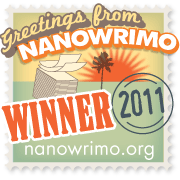Commas… they can either make or break your writing.
The trap a lot of people fall into with commas is to assume there is a ‘hard and fast’ rule that governs their use. The truth is, in many respects, there isn’t. While in some situations (which we will look at later) a comma or lack of comma can change the meaning you’re trying to convey, in many others a comma is merely a tool to be used to alter the speed and the flow of your writing.
Commas in lists
While there are not many rules that govern commas, there are a few. The first role of the humble comma is as a separator in a list. In this instance a comma is used between each item in the list, with the word ‘and’ in place of the final comma to close the list.
Example 1:
The colours of the Union flag are red, white and blue.
Example 2:
My breakfast consisted of bacon, eggs, sausages, beans and toast.
Hopefully the use of a comma in this situation should be fairly straight forward and there really shouldn’t be anything new here. What some of you may not be aware of however, is the Oxford comma. This is an optional use of the comma before the final ‘and’. Some people will always use an Oxford comma, while others will never use it at all. My advice is to stay open-minded and consider that in some circumstances, the Oxford comma can be used to effectively change the tone of your language, placing a little more emphasis on the final item. Read again my second example:
My breakfast consisted of bacon, eggs, sausages, beans, and toast.
See the difference? It’s certainly subtle, but it’s definitely there. Depending on the style of the writer this comma might well imply something out of the ordinary about the toast, or indeed, there might be a particular reason for us to note that the breakfast included toast. Either way you should note that the extra comma does impart a slightly altered ‘feel’ to the way the sentence reads.
The secret to success
The simplest way to think of a comma in general writing is to think of it as a pause – a place where your writing takes a natural breath for air between the bigger breaths that come at the end of each sentence.
In a sense, there’s no real right or wrong way to use a comma in this regard, as the way you use commas is dictated by your subject, your audience, your style and your tone.
To fully understand the best way to use commas in your writing, you really need to become one with your voice. This requires you to gain an understanding of how your writing actually reads.
As is so often the case, to become a better writer, you must become a better reader. Learn to read, and understand what your voice is actually saying and your writing voice will improve. The best tip I can give you then is this: read as you breathe. When you read something in your head it should sound as it would were you to read it out loud. This is, after all, how writing is meant to be interpreted.
Go on, try it yourself – read your writing back to yourself. The more you do it, and the more you come to appreciate the subtle changes a well-placed comma can bring, the better your writing will be as a result!
Commas as parentheses
Though there are countless examples of comma usage out there, I don’t feel this blog would be complete without a quick mention of the comma as a form of parentheses. Depending on whether you want to draw attention to a parenthetic point should depend on which form of parentheses you use, but let me give you this (very brief) example:
Limebirduk (of which this blog is a part) is a very useful site.
Limebirduk, of which this blog is a part, is a very useful site.
Limebirduk – of which this blog is a part – is a very useful site.
Note that you don’t always have to use brackets to make a parenthetical point – equally, you don’t always have to use dashes. Observe how as you read each example in turn there is an increasing amount of emphasis placed on the point ‘of which this blog is a part’. For a ‘middle of the road’ type aside, the comma is to be highly recommended.
And finally…
Sticklers for grammar from the UK will have heard of Lynne Truss’s Eats, Shoots and Leaves— a book inspired by poor punctuation in a nature article that describes how a panda ‘eats, shoots and leaves’ (i.e. the panda is armed and dangerous!) Notice here how the mis-placed comma acts as a separator.
In my second example, Raymond E. Feist’s At the Gates of Darkness ends as follows:
‘You’re certain there will be one?’ asked Sandreena.
‘As certain as I am of anything,’ said Pug.
The conversation ceased leaving them in silence.
Spotted the mistake? The conversation ceased leaving them in silence. Conversations, by their very nature, don’t leave their participants in silence. Without a comma, the line is a contradiction that leaves the reader feeling confused. What the line should say of course is: ‘The conversation ceased, leaving them in silence’. Without the comma, the whole effect of the last few paragraphs is lost — the ending simply loses its power and the cliff-hanger is no more!
If you have any questions or comments about this, or any other point raised in this blog, please feel free to comment below.
Until next time,
Mike



